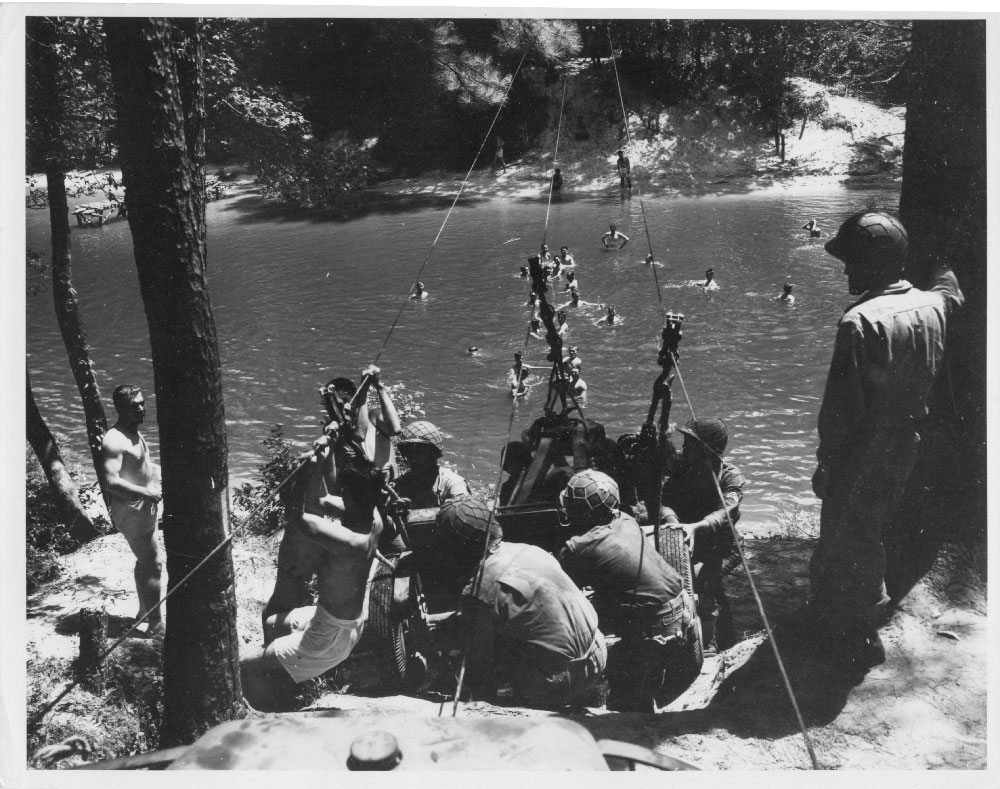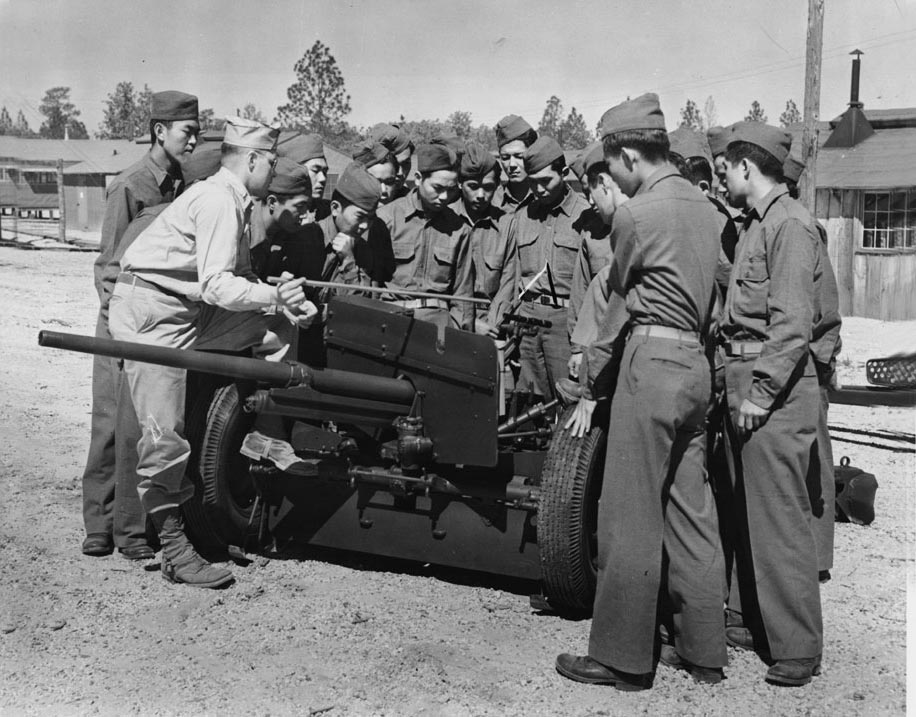
Anti-Tank Company- Home
- History
- Unit History
- 442nd Regimental Combat Team
- Anti-Tank Company
- Home
- History
- Unit History
- 442nd Regimental Combat Team
- Anti-Tank Company
A total of three gun platoons, one each assigned to the three infantry battalions, composed the 442nd Anti-Tank Company. The main weapon of the platoon was the 57mm AT gun, which unfortunately offered little competition against the German 88mm gun.
In both Italy and France, the men saw little tank action. Technical Sergeant Masato Doi, whose father inspired him to volunteer for the Army when he told his son that America had “nourished” him and was thus “his country,” served as a gun platoon sergeant for the Anti-Tank Company.1 Doi explained that the Anti-Tank guns were generally placed about 600 yards from the frontline. His job was to “place the guns in strategic positions, in case the enemy overran our front line – which never happened.”2 Because of the relative inaction during this period, many of the Anti-Tank men instead served as litter bearers, ration carriers and riflemen as needed.


In August 1944, Anti-Tank Company men who had secretly trained as glider infantry for two weeks in July participated in the invasion of Southern France with the 517th Parachute Infantry Regiment, engaging in combat near Sospel and Escarene.3 Each Waco CG-4A glider, guided by a pilot and co-pilot, carried a gun, a jeep, or a trailer filled with ammunition as its cargo.4 The glider also held three to six Anti-Tank soldiers armed with British “six pounders,” which were smaller than their 57mm guns. Doi recalls that the landing was “the scariest part” because gliders could get “stuck in trees, telephone poles.”5 In fact, nine men were injured during the landings.6
The Anti-Tank Company then rejoined the 442nd for combat in the Vosges Mountains, followed by a return to the area near Sospel during the “Champagne Campaign,” where the first platoon captured a one-man German submarine off the coast of Menton. Before the end of the war, they joined the regiment in Italy for the Po Valley Campaign. When the war finally ended, men were assigned to assist with the processing of POWs near Ghedi Airfield in Northern Italy and then to guard the POW stockades in Pisa.
The men of Anti-Tank Company shared a unique experience in combat, proving time and again their adaptability to perform whatever was required of them. They exhibited the bravery and perseverance that became characteristic of the Nisei soldiers of World War II.
Footnotes
- 1Oral history interview with Masato Doi, September 26, 2003, Hawaii, Tape #4, Hanashi Oral History Program, Go For Broke National Education Center, accessed on February 23, 2015,
- 2Doi.
- 3Dorothy Matsuo, From Boyhood to War: History and Anecdotes of the 442nd Regimental Combat Team> (Honolulu, HI: Mutual Publishing, 1992), p. 142.
- 4Shiroku “Whitey” Yamamoto, “Glider Training and D-Day Invasion,” The Hawaii Nisei Story: Americans of Japanese Descent During World War II, University of Hawaii, accessed on February 23, 2015,
- 5Doi.
- 6Matsuo, p. 142.
